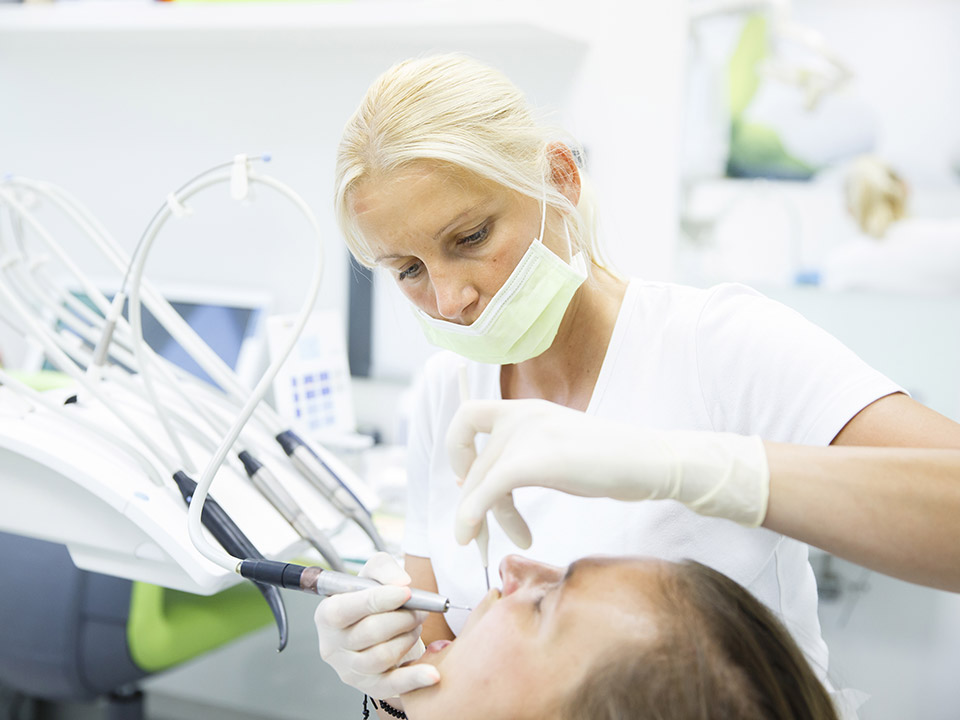When most people think about maintaining great oral health, brushing their teeth should be the highest priority. One of the cornerstones of having a white and healthy smile is brushing the teeth twice a day with fluoride toothpaste.
While brushing the teeth may be one of the most efficient and effective ways of keeping teeth healthy, you only reach about 60% of the total surface area of your teeth and mouth.
However, there’s something else you can do to help change things for the better. Cleaning between the teeth is a habit that can make a huge difference. Interdental brushing and flossing are the two best ways to clean between the teeth. You can learn more about both through the information below.
What is Interdental Brushing?
Interdental brushing is when you use an interdental brush to clean between the teeth. It is arguably one of the most effective and easiest ways to clean the gaps between the teeth and encourage a healthy smile.
Dental plaque can collect in places that a normal toothbrush cannot reach. Over time, plaque build-up triggers bad breath, gum inflammation, and tooth decay. Consider interdental cleaning as part of your toothbrushing regimen to avoid these dental issues.
Interdental brushes are small brushes specifically made to clean the gaps of the teeth, which traditional toothbrushes cannot reach. Regular tooth brushing plus interdental cleaning is a great way to help keep teeth and gums healthy and fresh.
When cleaning between your teeth in the first stages, your gums might develop soreness. Some people may even experience mild bleeding. But this is normal, and you should keep cleaning your teeth this way. The bleeding and soreness should stop in a few days.
How to Pick The Right Interdental Brush
- Interdental brushes have different shapes and sizes. So, it can be a little hard to know which product best suits your needs. The best advice on size should come from an experienced dental professional, but there are a few tips you can use. The brush you pick should have a comfortable, snug fit between your teeth and gums. The wire, often plastic-coated, should not come in contact with the sides of your gums and teeth.
- Avoid forcing the brushes into gaps and spaces.
- It is best to get 2-3 different sizes, though it all depends on how big the gaps between your teeth are.
How to Use Interdental Brushes
Once you have the interdental brush, it is important to use the correct cleaning techniques. Luckily, it is very easy to learn how to use interdental brushes. The following instructions should be helpful if you use this cleaning method.
- Insert the interdental brush between your teeth close to your gums. Use the smallest size first, then work your way up to bigger brush bristles that can touch your gum tissue and tooth surfaces.
- Once you insert the brush, move it back and forth to its full length, around 3 to 4 times. Ensure you clean all the gaps and spaces between your teeth at least once daily.
- Use straight interdental brushes for the front teeth. Avoid forcing the brush into gaps and spaces. Instead, gently work the brush in or use smaller brush sizes.
- Use small interdental brushes for the back teeth- If you are using small interdental brushes, consider curving the neck slightly. Use your finger to add pressure on the brush’s soft plastic neck, so reaching the back of your teeth becomes easier.
- Using bigger interdental brushes. When using bigger interdental brushes, slightly curving the brush’s wire will allow it to clean the back of your teeth better. Furthermore, the brush will last longer if you do this.
Always insert interdental brushes from the outside of your cheek through each gap.
In addition, ensure to quickly rinse the brush after cleaning each tooth so that you do not contaminate the next gap with dental plaque.
Flossing
You should also use dental floss to clean the spaces between your teeth properly. In fact, you should floss at least once a day if you want to encourage a clean and healthy smile. There are several different kinds of dental floss available.
- Waxed floss. It slips between the gaps of your teeth easily because it has a thin layer of wax on the surface. In addition, it is stronger and thicker, so better for adults who can grip the wax surface better.
- Unwaxed floss. It is more common, often made from nylon material. It is thinner than other types of floss, making it ideal for people with smaller gaps between the teeth.
- Dental tape. It is broad, flat, and looks like tape. It comes in waxed and unwaxed surfaces. The thicker nature makes it ideal for people with big gaps between their teeth.
- Water flosser. It is a hand-held device that uses water streams in steady pulses to remove food particles and plaque from between the teeth. It is different from traditional floss but just as effective.
Some people find flossing challenging, especially those flossing for the first time. When starting, always do your flossing in front of a mirror if you can.
If you are struggling with using traditional dental floss, try using a dental pick. Dental picks are small plastic tools with a sharp end and a floss strand. It is often ideal for removing small pieces of food in place of a toothpick.
While a dental pick cannot replace dental floss, it is better than nothing, especially if you are new to flossing.
Takeaway
Even though toothbrushes can remove dental plaque from most teeth’ surfaces, they may not reach between teeth. These gaps can harbor plaque build-up and food debris. But you can avoid this.
Besides brushing your teeth, consider flossing and using interdental brushes to help clean between the gaps of your teeth. These methods are effective and will contribute to a clean and healthy smile.
Our team is dedicated to offer advice and services that will give you a smile you can be proud of. Visit us today if you are experiencing dental health issues or need information on keeping good oral hygiene.







